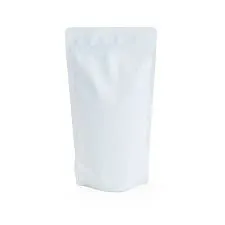- Afrikaans
- Albanian
- Amharic
- Arabic
- Armenian
- Azerbaijani
- Basque
- Belarusian
- Bengali
- Bosnian
- Bulgarian
- Catalan
- Cebuano
- chinese_simplified
- chinese_traditional
- Corsican
- Croatian
- Czech
- Danish
- Dutch
- English
- Esperanto
- Estonian
- Finnish
- French
- Frisian
- Galician
- Georgian
- German
- Greek
- Gujarati
- haitian_creole
- hausa
- hawaiian
- Hebrew
- Hindi
- Miao
- Hungarian
- Icelandic
- igbo
- Indonesian
- irish
- Italian
- Japanese
- Javanese
- Kannada
- kazakh
- Khmer
- Rwandese
- Korean
- Kurdish
- Kyrgyz
- Lao
- Latin
- Latvian
- Lithuanian
- Luxembourgish
- Macedonian
- Malgashi
- Malay
- Malayalam
- Maltese
- Maori
- Marathi
- Mongolian
- Myanmar
- Nepali
- Norwegian
- Norwegian
- Occitan
- Pashto
- Persian
- Polish
- Portuguese
- Punjabi
- Romanian
- Russian
- Samoan
- scottish-gaelic
- Serbian
- Sesotho
- Shona
- Sindhi
- Sinhala
- Slovak
- Slovenian
- Somali
- Spanish
- Sundanese
- Swahili
- Swedish
- Tagalog
- Tajik
- Tamil
- Tatar
- Telugu
- Thai
- Turkish
- Turkmen
- Ukrainian
- Urdu
- Uighur
- Uzbek
- Vietnamese
- Welsh
- Bantu
- Yiddish
- Yoruba
- Zulu
Understanding the Importance of USDA Organic Certification for Sustainable Agriculture
Understanding the USDA Organic Seal What It Means for Consumers
In an age where consumers are becoming increasingly conscious of what they eat and how it is produced, organic food has seen a significant rise in popularity. One of the most recognized symbols of organic certification in the United States is the USDA Organic seal. This article aims to provide a comprehensive understanding of the USDA Organic sign, shedding light on its significance, regulations, and what it means for consumers.
The Origin of the USDA Organic Seal
The USDA Organic seal was established by the United States Department of Agriculture (USDA) through the Organic Foods Production Act of 1990. This legislation aimed to create a consistent set of standards for organic production and handling. The USDA organic certification program began its implementation in 2002, setting a legal boundary that producers must meet to label their products as organic.
What the USDA Organic Seal Represents
The presence of the USDA Organic seal on a product indicates that it has been grown and processed according to strict national organic standards. There are several key criteria that products must meet to carry this seal
1. No Synthetic Chemicals Organic farming prohibits the use of synthetic fertilizers, herbicides, and pesticides. Instead, organic farmers rely on natural substances and methods to grow their crops.
2. Non-GMO Products labeled with the USDA Organic seal cannot contain genetically modified organisms (GMOs). This appeals to consumers who prioritize natural food sources.
3. Animal Welfare Organic livestock must be raised in environments that allow them to engage in natural behaviors. This includes outdoor access, organic feed, and the prohibition of antibiotics and growth hormones.
4. Soil Health Organic farmers emphasize soil health through practices such as crop rotation, cover cropping, and the application of compost rather than chemical fertilizers.
usda organic sign

5. Certification Process To earn the USDA Organic seal, farms and processing facilities must undergo an extensive certification process. This includes the completion of an application, an on-site inspection, and a review of records. Maintaining organic status requires ongoing compliance with regulations, making it a commitment that organic producers take seriously.
Labeling Categories
When consumers see the USDA Organic seal, it is essential to understand the labeling categories associated with it
- 100% Organic Products that meet all organic standards and contain 100% organic ingredients. - Organic Products containing at least 95% organic ingredients can be labeled as organic and carry the seal. - Made with Organic Ingredients Products that contain at least 70% organic ingredients can use this phrase but cannot display the USDA Organic seal.
Implications for Consumers
Choosing products with the USDA Organic seal offers several benefits to consumers. Firstly, it provides assurance that the food they are purchasing meets rigorous standards, promoting healthier eating habits and sustainable agricultural practices. Secondly, many consumers opt for organic products due to concerns about the potential health risks associated with pesticides and synthetic additives.
However, it is also crucial for consumers to recognize that organic products can often be more expensive than their conventional counterparts. This price difference may be attributed to higher production costs and lower yield in organic farming practices. Despite this, many consumers are willing to invest in organic products for the perceived health benefits and ethical considerations surrounding animal welfare and environmental impact.
Conclusion
The USDA Organic seal is not just a marketing claim; it represents a commitment to sustainable farming practices, animal welfare, and consumer health. By understanding what the seal signifies, consumers can make informed choices about the foods they purchase and the impact their choices have on their health and the environment. As the demand for organic products continues to grow, the USDA Organic seal will remain a vital benchmark for quality and sustainability in the food industry. So, the next time you shop, keep an eye out for that iconic seal—it’s a mark of quality you can trust.













